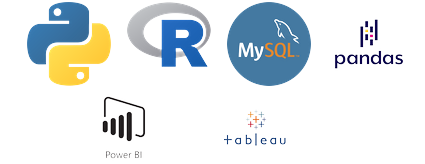In today’s data-driven world, a Business Intelligence (BI) dashboard is one of the most valuable tools an organization can have. It enables decision-makers to monitor key metrics, spot trends, and make informed decisions. However, one of the most frequently asked questions when initiating a BI project is: “How much time will it take to build a full-fledged, production-level BI dashboard?”
Short Answer: It Depends.
The time required to build a BI dashboard varies based on several factors including the complexity of data, number of metrics, integration points, business logic, and visual customization. A basic dashboard might take a few days, while a highly interactive, production-grade dashboard with multiple data sources can take 4 to 12 weeks or even more.
Key Factors That Affect Timeline
Let’s break down the factors that influence the time it takes:
1. Business Requirements & Stakeholder Inputs
Gathering detailed requirements is often underestimated. It usually takes 1 to 2 weeks to define:
- What KPIs and metrics to track
- Who the end users are
- What decisions will be made based on the dashboard
This phase may involve multiple iterations, especially in larger organizations.
2. Data Availability & Data Quality
If the required data is clean, stored in a centralized warehouse, and easily accessible, the job becomes easier. However, if the data is scattered across multiple systems, or is inconsistent, expect 2 to 4 weeks or more just for:
- Data cleaning
- Standardization
- Integration using ETL pipelines
3. Tool Selection & Setup
Whether using Power BI, Tableau, Looker, or open-source tools like Metabase or Superset, choosing the right tool and configuring access, servers, and permissions can take another 2–5 days.
4. Dashboard Design and Prototyping
Creating the UI/UX for the dashboard—layout, charts, filters, and interactivity—typically requires 1 to 2 weeks, especially if wireframes are to be approved by stakeholders.
5. Development and Integration
This is the heart of the process. It involves:
- Writing complex SQL queries or DAX calculations
- Building charts, filters, and interactions
- Integrating real-time or batch data pipelines
This phase can take 2 to 4 weeks, depending on dashboard complexity.
6. Testing and Validation
It’s not just about “does the dashboard load?” but:
- Are the numbers correct?
- Do filters work correctly?
- Does it perform under load?
Expect 1 to 2 weeks for proper QA, including user acceptance testing (UAT).
7. Deployment & Training
Finally, the dashboard is pushed to production. This includes:
- Setting up refresh schedules
- Assigning access controls
- Training users on how to use the dashboard
This may take 2–5 days.
Real-World Example: Sales Dashboard for a Retail Chain
Let’s take the example of a retail chain with 150+ stores across the country. The goal was to build a dashboard for regional managers to track:
- Daily sales
- Top-selling products
- Inventory levels
- Promotions performance
- Regional comparisons
Here’s how the timeline played out:
| Phase | Duration | Key Activities |
|---|---|---|
| Requirements Gathering | 1.5 weeks | Stakeholder interviews, KPI definitions |
| Data Engineering | 3 weeks | Connecting POS, CRM, inventory databases; cleaning data |
| Tool Setup | 3 days | Power BI setup, user access configuration |
| Dashboard Prototyping | 1.5 weeks | Draft layout, feedback loop |
| Development | 3 weeks | DAX logic for sales KPIs, product ranking, dynamic filtering |
| Testing & UAT | 2 weeks | Cross-checking figures with finance, testing filters and speed |
| Deployment & Training | 1 week | Launch on internal portal, user training webinars |
Total Duration: 10–11 weeks
The timeline included unexpected delays, such as:
- Data discrepancies between systems
- A mid-project change request to include real-time store performance using APIs
However, post-deployment, the dashboard helped regional managers increase stock turnover by 12% in the first quarter, thanks to better visibility of slow-moving inventory.
Tips to Speed Up BI Dashboard Projects
- Start with a prototype – A clickable mockup can speed up stakeholder alignment.
- Use agile sprints – Don’t wait until the end to show results. Iterative releases help refine direction.
- Automate ETL early – Invest in building a robust pipeline from day one.
- Limit scope initially – Launch with a Minimum Viable Dashboard (MVD), then expand.
- Get buy-in early – Regular feedback from end-users helps reduce rework.
Conclusion
Building a full-fledged, production-level BI dashboard isn’t just about dragging charts onto a canvas. It’s a structured process involving requirements, data engineering, design, development, and deployment. While simple dashboards can go live in a few days, enterprise-grade dashboards often require 8–12 weeks from start to finish.
By understanding the factors involved and planning accordingly, businesses can ensure timely delivery and better ROI from their BI investments.


